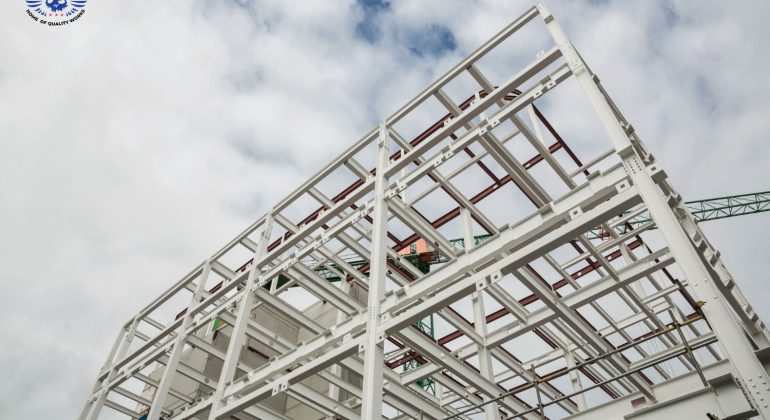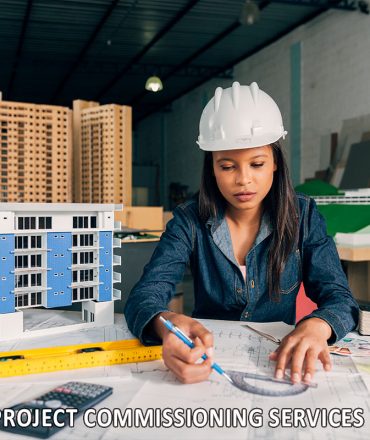Introduction
Steel structures are the backbone of modern industrial construction. In sectors such as oil & gas, manufacturing, and infrastructure development, durable and well-designed steel frameworks are essential for ensuring operational safety and long-term performance. In this article, we’ll explore the top 5 crucial design principles that underpin maximum durability in steel structures. Whether you’re an engineer, project manager, or industry stakeholder, understanding these principles is key to delivering successful projects that stand the test of time.
The Role of Steel Structures in Industrial Construction
Steel is renowned for its strength, versatility, and durability, making it a preferred material in industrial construction. In the oil & gas industry, steel structures form the foundation of storage tanks, pipelines, and processing facilities. Their ability to withstand extreme conditions—such as high pressure, temperature fluctuations, and corrosive environments—ensures that critical infrastructures operate safely and efficiently. Additionally, steel’s adaptability allows for rapid assembly and scalability, meeting the dynamic needs of modern industries.
Principle 1: Quality Material Selection
One of the most critical factors in ensuring the durability of steel structures is the selection of high-quality materials. Using premium, high-grade steel not only enhances structural integrity but also improves resistance to wear, corrosion, and environmental stress.
-
High-Grade Steel: Selecting steel with superior mechanical properties ensures that structures can handle heavy loads and resist deformation.
-
Corrosion Resistance: In harsh industrial environments, corrosion is a constant threat. High-quality, corrosion-resistant steel minimizes the risk of degradation over time.
-
Cost Efficiency: Although premium materials may come with a higher initial cost, they reduce long-term maintenance expenses and prolong the lifespan of the structure.
By focusing on quality material selection, you lay a strong foundation that directly impacts the longevity and safety of your industrial construction projects.
Principle 2: Rigorous Engineering Design and Analysis
A robust design is the cornerstone of any durable steel structure. Rigorous engineering design and analysis ensure that all components work harmoniously to withstand operational stresses.
-
Computer-Aided Design (CAD): Modern CAD tools enable engineers to create detailed, precise models of steel structures. These digital models facilitate accurate load calculations and stress analysis, ensuring that every component is designed to perform under pressure.
-
Simulation and Load Testing: Before construction begins, simulations are run to model how structures respond to various load conditions. This process identifies potential weak points and allows for the implementation of corrective measures to enhance durability.
-
Design Optimization: Incorporating advanced design principles such as redundancy and load distribution ensures that the structure remains stable, even if one element fails.
Through meticulous design and analysis, you can minimize the risk of structural failures and maximize the lifespan of your projects.
Principle 3: Precision Fabrication and Construction Techniques
Even the best designs can fall short without precise fabrication and construction. Employing modern fabrication methods and ensuring accurate on-site assembly are critical for realizing the full potential of your design.
-
Modern Fabrication Methods: Utilizing state-of-the-art fabrication techniques, such as laser cutting and automated welding, ensures that every component meets exact specifications.
-
On-Site Construction Standards: Adhering to strict construction standards during the assembly process is essential. This includes proper alignment, secure joint connections, and adherence to detailed construction plans.
-
Quality Control: Regular quality checks during fabrication and construction help identify and rectify deviations from design specifications. This rigorous approach reduces the likelihood of structural issues that could compromise durability.
Precision in fabrication and construction is the final step in translating innovative designs into tangible, durable steel structures.
Principle 4: Regular Inspection and Preventive Maintenance
Even the most well-constructed structures require ongoing care. Regular inspection and preventive maintenance are key to identifying potential issues before they escalate into major problems.
-
Non-Destructive Testing (NDT): Techniques such as ultrasonic testing, radiography, and magnetic particle inspection are essential for assessing the integrity of steel components without causing damage.
-
Hydro Testing: Used primarily for storage tanks and pipelines, hydro testing helps verify that the structure can withstand operating pressures and identify any leaks or weaknesses.
-
Scheduled Maintenance: Developing a proactive maintenance schedule ensures that all components are inspected regularly. This approach minimizes downtime and extends the service life of the structure by addressing wear and tear before it becomes critical.
Implementing a comprehensive inspection and maintenance program not only protects your investment but also enhances safety and operational efficiency.
Principle 5: Adherence to Industry Standards and Safety Regulations
Compliance with industry standards and safety regulations is non-negotiable in engineering. These standards ensure that steel structures are built to withstand environmental and operational stresses while protecting human life and property.
-
International Engineering Codes: Standards such as those set by the American Institute of Steel Construction (AISC) and the International Building Code (IBC) provide detailed guidelines for steel structure design and construction.
-
Local Regulations: In Tanzania and the broader East African region, adherence to local building codes and safety regulations is crucial. These regulations are designed to address regional environmental conditions and industry practices.
-
Safety and Environmental Considerations: Incorporating safety factors into design calculations and construction practices helps prevent accidents and ensures environmental sustainability.
Following industry standards and safety regulations guarantees that your steel structure not only meets legal requirements but also achieves optimal performance and durability.
Case Studies: Successful Projects Implementing These Principles
Real-world examples demonstrate how these principles come together to create durable and resilient structures. For instance, Etago Company Limited recently completed a large-scale steel structure project for an oil terminal. By prioritizing quality material selection, leveraging advanced CAD software for design, and employing precision fabrication techniques, the project achieved remarkable durability and efficiency.
-
Project Highlights:
-
Quality Material Use: High-grade, corrosion-resistant steel was used to withstand harsh environmental conditions.
-
Advanced Design: Detailed simulations and load testing ensured the structure was optimized for maximum performance.
-
Maintenance Protocols: Regular inspections and preventive maintenance were integrated into the project plan, ensuring long-term durability.
-
These case studies not only validate the effectiveness of the design principles but also highlight Etago’s commitment to excellence in every project.
Future Trends in Steel Structure Design
The field of steel structure design is continually evolving, with new technologies and innovative practices emerging to further enhance durability.
-
Emerging Technologies: Advances in 3D printing and robotics are beginning to influence fabrication processes, allowing for even greater precision and efficiency.
-
Sustainable Engineering Practices: With the increasing focus on sustainability, eco-friendly materials and energy-efficient construction methods are becoming more prevalent.
-
Digital Twin Technology: The use of digital twins—virtual replicas of physical structures—enables continuous monitoring and predictive maintenance, reducing the risk of unexpected failures.
Staying ahead of these trends will enable engineers and construction firms to build structures that are not only durable but also future-proof.
How Etago Company Limited Can Enhance Your Projects
Etago Company Limited is at the forefront of engineering innovation, offering a range of services designed to maximize the durability and performance of steel structures. Our comprehensive offerings include:
-
Engineering Design, Construction, and Maintenance: We provide end-to-end solutions that cover every aspect of steel structure projects.
-
Tank Inspections, Hydro Testing, and NDT Activities: Our rigorous testing protocols ensure that your structures remain safe and reliable.
-
Oil & Gas Infrastructure Development and Refurbishment: We specialize in projects that require the highest levels of durability and operational efficiency.
-
Project Management and Commissioning: Our expert team oversees every phase of your project, ensuring timely and successful delivery.
At Etago, we combine modern technologies with deep industry expertise to deliver solutions that meet the highest standards of quality, safety, and innovation.
Embracing Digital Transformation for Better Engineering Solutions
In today’s digital age, access to real-time data and advanced analytical tools is transforming the engineering landscape. Etago leverages digital technologies to optimize every stage of project development—from initial design and simulation to final inspection and maintenance. Our state-of-the-art website, www.etago.co.tz, serves as a hub for industry insights, case studies, and the latest innovations in steel structure design.
By embracing digital transformation, we provide our clients with the tools and insights needed to make informed decisions and achieve outstanding project outcomes.
Building a Legacy of Durability and Excellence
Durability in steel structure design isn’t just about using the right materials or following the latest trends—it’s about building a legacy of excellence. Every project we undertake is a testament to our commitment to quality, safety, and innovation. We believe that by focusing on these core principles, we can create structures that not only meet today’s demands but also stand strong for future generations.
Our dedication to excellence has earned us a reputation as a leader in industrial construction and engineering solutions across Tanzania and East Africa. When you choose Etago, you’re not just investing in a project—you’re investing in a long-term partnership built on trust, expertise, and a shared vision for the future.
Conclusion
In summary, the durability of steel structures is driven by a combination of quality material selection, rigorous design and analysis, precision fabrication, regular maintenance, and strict adherence to industry standards. These five crucial principles are the foundation of any successful engineering project. By implementing these strategies, Etago Company Limited consistently delivers robust and resilient structures that meet the highest standards of performance and safety.
Whether you’re embarking on a new project or looking to upgrade existing infrastructure, consider partnering with Etago for unparalleled engineering solutions. Our expertise in steel structure design and our commitment to innovation ensure that your investment is built to last.
FAQs
-
Why is high-quality steel important for structural durability?
High-quality steel offers superior strength and corrosion resistance, ensuring that structures can withstand harsh environmental conditions and heavy loads over time. -
How does advanced design software contribute to durability?
Tools like CAD and simulation software enable precise modeling and stress analysis, allowing engineers to optimize designs and anticipate potential structural issues before construction begins. -
What role do regular inspections play in maintaining steel structures?
Regular inspections, including non-destructive testing and hydro testing, help identify early signs of wear or damage, enabling timely repairs and extending the structure’s lifespan. -
How do industry standards impact the construction of steel structures?
Adhering to international and local standards ensures that structures are built with proven engineering practices, enhancing safety, reliability, and long-term performance. -
Can Etago Company Limited tailor solutions to specific project needs?
Yes, Etago specializes in providing customized engineering design, construction, and maintenance services to meet the unique requirements of each client, ensuring optimal outcomes.












